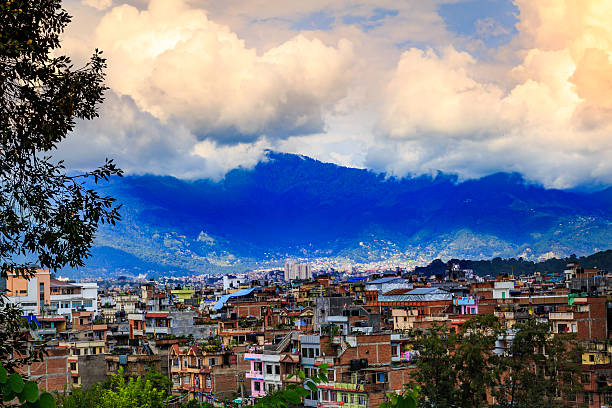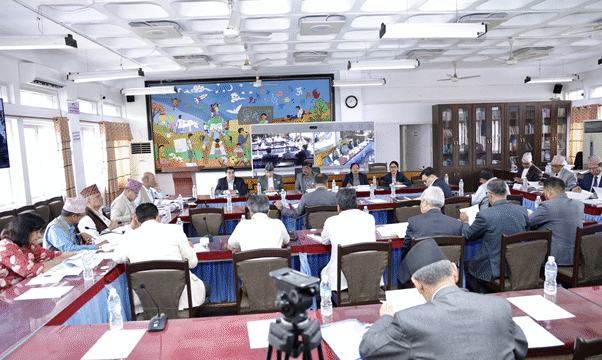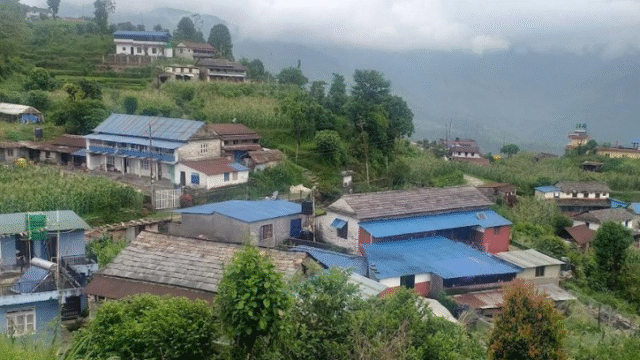Currently, the influence of monsoon winds is being felt across all regions of Nepal, leading to widespread changes in weather patterns. According to the Meteorological Forecasting Division (MFD), the low-pressure line associated with the monsoon is currently positioned near its normal location, resulting in weather instability across the country.
Cloudy Afternoons and Possibility of Thunderstorms in Many Areas
As per the forecast, the afternoon weather across Nepal is expected to be partly to generally cloudy. Many regions, especially those in the Koshi, Bagmati, Gandaki, and Sudurpaschim provinces, may witness light to moderate rainfall accompanied by thunder and lightning. These intermittent thunderstorms are characteristic of the active monsoon phase currently affecting the region.
The meteorological bulletin highlights that while the rainfall may be light to moderate in intensity at most places, some hilly areas, particularly in the Koshi and Bagmati provinces, are expected to receive heavy rainfall. This could potentially lead to localized flooding and disruptions, especially in low-lying and landslide-prone areas.
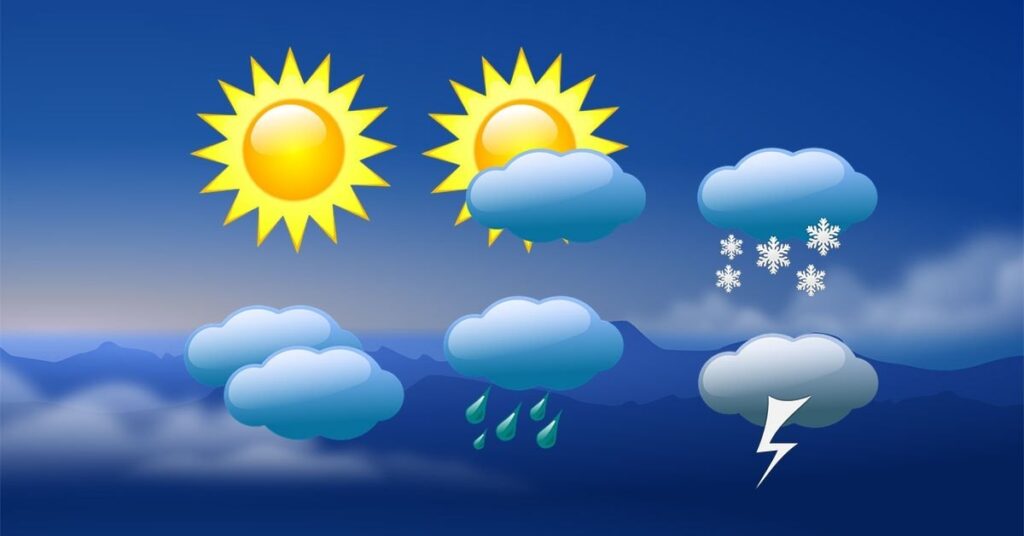
High-Hilly and Mountainous Regions Could See Rain and Snow
In addition to rainfall in the lowlands and hills, the Division has also forecast light to moderate rainfall with the possibility of snowfall in one or two places within the high-hilly and mountainous regions of Nepal. This is significant given that even during the monsoon, the higher elevations continue to receive snow, maintaining cold temperatures and adding moisture to the snowpacks, which later affect river flows downstream.
Widespread Cloud Cover During Night Hours
As evening transitions into night, the weather is expected to remain generally cloudy across the Bagmati, Gandaki, Lumbini, Karnali, and Sudurpaschim provinces. The remaining provinces, such as Koshi and Madhesh, will likely experience partly to generally cloudy skies.
During this period, the forecast warns of light to moderate rainfall with possible thunderstorms and lightning at many places in Bagmati, Gandaki, Lumbini, Karnali, and Sudurpaschim. Additionally, a few places in the remaining provinces are also likely to receive rainfall.

Warning for Heavy to Extremely Heavy Rainfall in Certain Provinces
A notable part of the current weather alert includes a warning for heavy to extremely heavy rainfall. The Division has specifically pointed out the Gandaki, Karnali, and Sudurpaschim provinces as areas at higher risk of intense rainfall tonight and into the following day. These regions may experience severe downpours that can lead to flooding of rivers, inundation of settlements, and landslides in mountainous terrain.
Furthermore, one or two places in the Koshi, Bagmati, and Lumbini provinces are also likely to receive heavy rainfall. Such rainfall events, although localized, can be disruptive, especially in areas with already saturated soil or weak infrastructure.
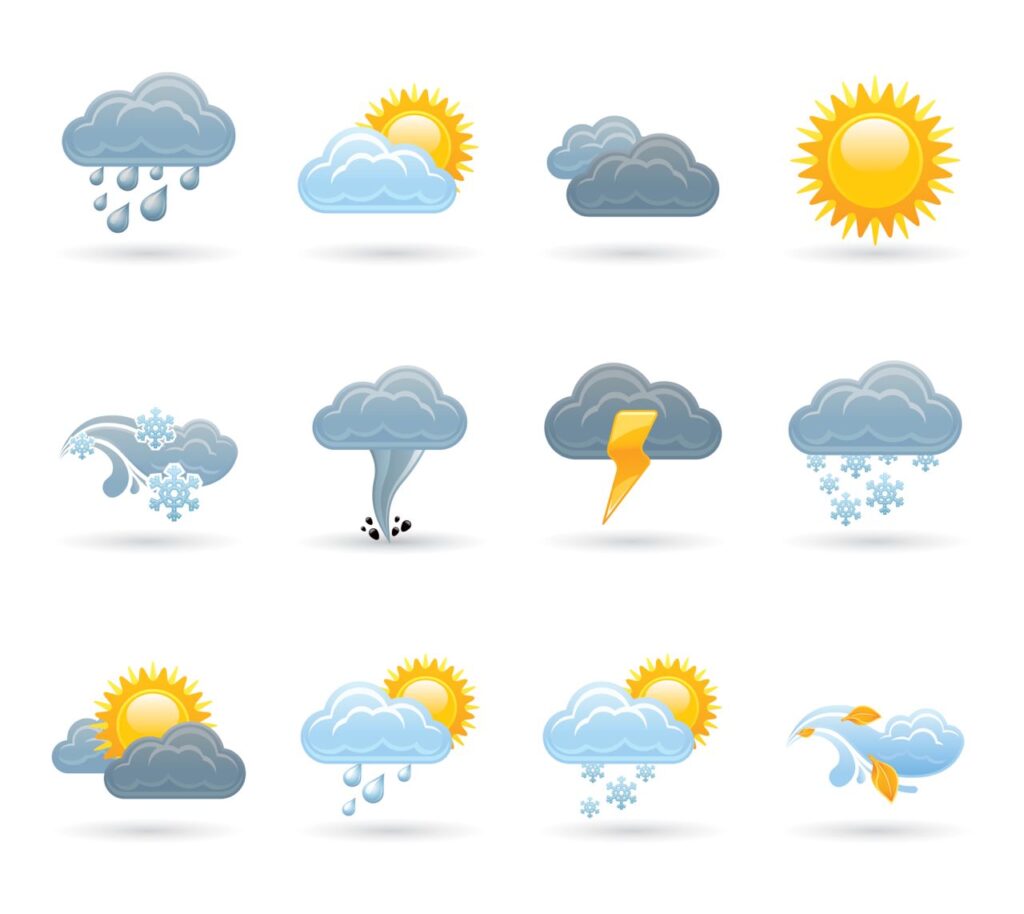
Safety Measures and Public Advisory
Given the ongoing monsoon activity, the Meteorological Forecasting Division has urged the public to remain alert. People living in flood-prone and landslide-prone areas are advised to take precautionary measures. Local administrations and disaster management teams are expected to remain on standby in high-risk districts to provide emergency support if necessary.
The Department of Hydrology and Meteorology has also encouraged citizens to keep track of updated weather forecasts and follow official bulletins issued through television, radio, and social media channels. Travelers and trekkers, particularly those heading into high-hill or mountainous routes, have been advised to consult weather updates before planning their trips, as trails could be slippery or blocked by landslides.

Impacts on Agriculture and Transportation
The monsoon, while crucial for agriculture, also brings challenges to transport and logistics, especially when rainfall intensifies suddenly. Roads in rural and hilly regions may become muddy, waterlogged, or damaged due to landslides. The heavy rains also affect sowing and harvesting cycles, and farmers are watching weather patterns closely to plan their seasonal activities.
Air travel could also face disruptions due to reduced visibility and wet runway conditions. Domestic flights operating in smaller mountainous airfields are often delayed or canceled during periods of bad weather.
The monsoon has firmly established its presence across Nepal, bringing with it a mix of benefits and risks. While the consistent rains are a boon to agriculture and water supply, the threat of heavy to extremely heavy rainfall, especially in hilly and mountainous provinces, demands caution. With the low-pressure monsoon line hovering around its usual position, the coming days may continue to bring similar patterns of rainfall, cloud cover, and thunderstorms. Authorities and the general public alike must remain prepared and vigilant during this active monsoon period.
